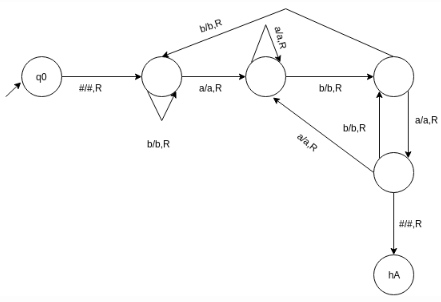Computer Science Engineering (CSE) Exam > Computer Science Engineering (CSE) Tests > Test: Turing Machine & Halting - Computer Science Engineering (CSE) MCQ
Test: Turing Machine & Halting - Computer Science Engineering (CSE) MCQ
Test Description
10 Questions MCQ Test - Test: Turing Machine & Halting
Test: Turing Machine & Halting for Computer Science Engineering (CSE) 2025 is part of Computer Science Engineering (CSE) preparation. The Test: Turing Machine & Halting questions and answers have been prepared
according to the Computer Science Engineering (CSE) exam syllabus.The Test: Turing Machine & Halting MCQs are made for Computer Science Engineering (CSE) 2025 Exam.
Find important definitions, questions, notes, meanings, examples, exercises, MCQs and online tests for Test: Turing Machine & Halting below.
Solutions of Test: Turing Machine & Halting questions in English are available as part of our course for Computer Science Engineering (CSE) & Test: Turing Machine & Halting solutions in
Hindi for Computer Science Engineering (CSE) course.
Download more important topics, notes, lectures and mock test series for Computer Science Engineering (CSE) Exam by signing up for free. Attempt Test: Turing Machine & Halting | 10 questions in 10 minutes | Mock test for Computer Science Engineering (CSE) preparation | Free important questions MCQ to study for Computer Science Engineering (CSE) Exam | Download free PDF with solutions
Test: Turing Machine & Halting - Question 1
Which of the following regular expression resembles the given diagram?

Detailed Solution for Test: Turing Machine & Halting - Question 1
Test: Turing Machine & Halting - Question 2
Construct a turing machine which accepts a string with ‘aba’ as its substring.
Detailed Solution for Test: Turing Machine & Halting - Question 2
Test: Turing Machine & Halting - Question 3
The number of states required to automate the last question i.e. {a,b}*{aba}{a,b}* using finite automata:
Detailed Solution for Test: Turing Machine & Halting - Question 3
Test: Turing Machine & Halting - Question 4
The machine accept the string by entering into hA or it can:
Detailed Solution for Test: Turing Machine & Halting - Question 4
Detailed Solution for Test: Turing Machine & Halting - Question 5
Test: Turing Machine & Halting - Question 6
Which of the following can accept even palindrome over {a,b}
Detailed Solution for Test: Turing Machine & Halting - Question 6
Test: Turing Machine & Halting - Question 7
Which of the functions can a turing machine not perform?
Detailed Solution for Test: Turing Machine & Halting - Question 7
Test: Turing Machine & Halting - Question 8
If T1 and T2 are two turing machines. The composite can be represented using the expression:
Detailed Solution for Test: Turing Machine & Halting - Question 8
Detailed Solution for Test: Turing Machine & Halting - Question 9
Detailed Solution for Test: Turing Machine & Halting - Question 10
Information about Test: Turing Machine & Halting Page
In this test you can find the Exam questions for Test: Turing Machine & Halting solved & explained in the simplest way possible.
Besides giving Questions and answers for Test: Turing Machine & Halting, EduRev gives you an ample number of Online tests for practice
Download as PDF



















